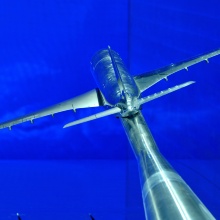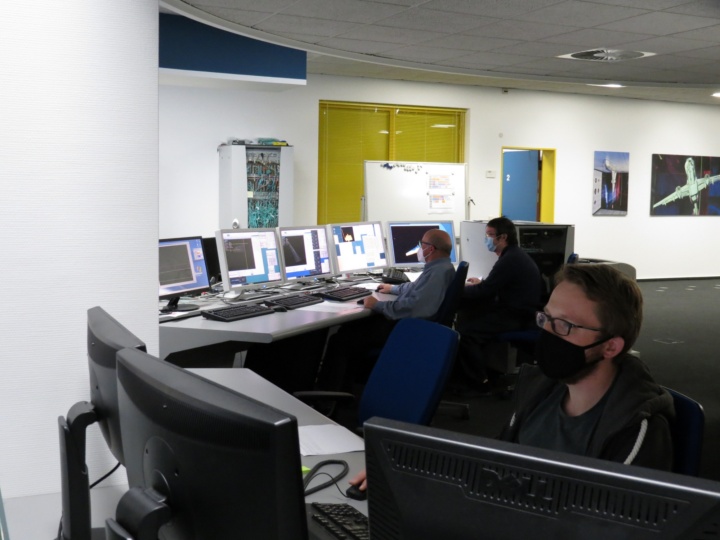The first wind tunnel entry of FOR 2895 was successfully conducted in the European Transonic Windtunnel (ETW) in November 2020. With the scientific goals defined by the researchers, and the design and manufacture of the horizontal tailplane completed, the model provided by Airbus was received at ETW and prepared for the test campaign. The model was installed in the test section and subjected to detailed checks and shakedown runs in preparation for the measurements. The measurement program involved conditions at multiple Mach and Reynolds numbers for a clean wing configuration, without engine nacelles. After multiple weeks of preparation, the campaign was carried out over several days at gradually increasing Reynolds numbers. Low Reynolds number testing was conducted at ambient conditions, while high Reynolds numbers required tunnel conditioning for operations at cryogenic temperatures and elevated tunnel pressures. The measurements were separated into different blocks, with the model removed from the test section several times for inspection and application or removal of appropriate transition fixing on wing and tailplane surfaces. Markers applied to the wing lower surface were tracked by cameras in order to record aeroelastic deformation of the wing due to forces acting on it.
The Reynolds number ranged from 3.3 to 25.0 million, with the Mach number range spanning from 0.84 to 0.90. Two levels of dynamic pressure were selected to evaluate the effects of model deformation. At each flow condition, the test plan involved force and pressure measurements and recording of reference data. This provided a broad range of performance data across a large part of the flight envelope.
The main focus of the first measurement campaign was the use of pressure sensitive paint (PSP) at predefined angle of attack settings at high Reynolds number to characterize the flow on the wing and horizontal tailplane surfaces. In addition to the regular ETW data acquisition hardware, high-speed cameras and LED lights were installed in the run-up to the test in order to capture images of the model surfaces. The corresponding model surfaces were coated with a bespoke paint prepared by the DLR PSP team for each individual model configuration. Both steady-state and time-resolved PSP data were acquired using two different camera setups installed in the tunnel walls. The high-speed images were acquired at up to 2000 frames per second, enabling deep insight into unsteady shock behaviour at high angles of attack.
Due to Covid-related health protection measures, only a bare minimum of visiting personnel was present at ETW in addition to the regular operations team. Andreas Waldmann from the University of Stuttgart served as the point of contact for the scientific partners, while Daisuke Yorita and Ulrich Henne from DLR were present to execute the PSP measurements. Despite this, the campaign ran smoothly and was deemed very successful. The acquired results provide an extensive dataset, which will help the researchers involved in FOR 2895 to further the understanding of high Reynolds number flight and high speed stall. All subsequent measurement campaigns will have this baseline dataset for comparison to rely on.



